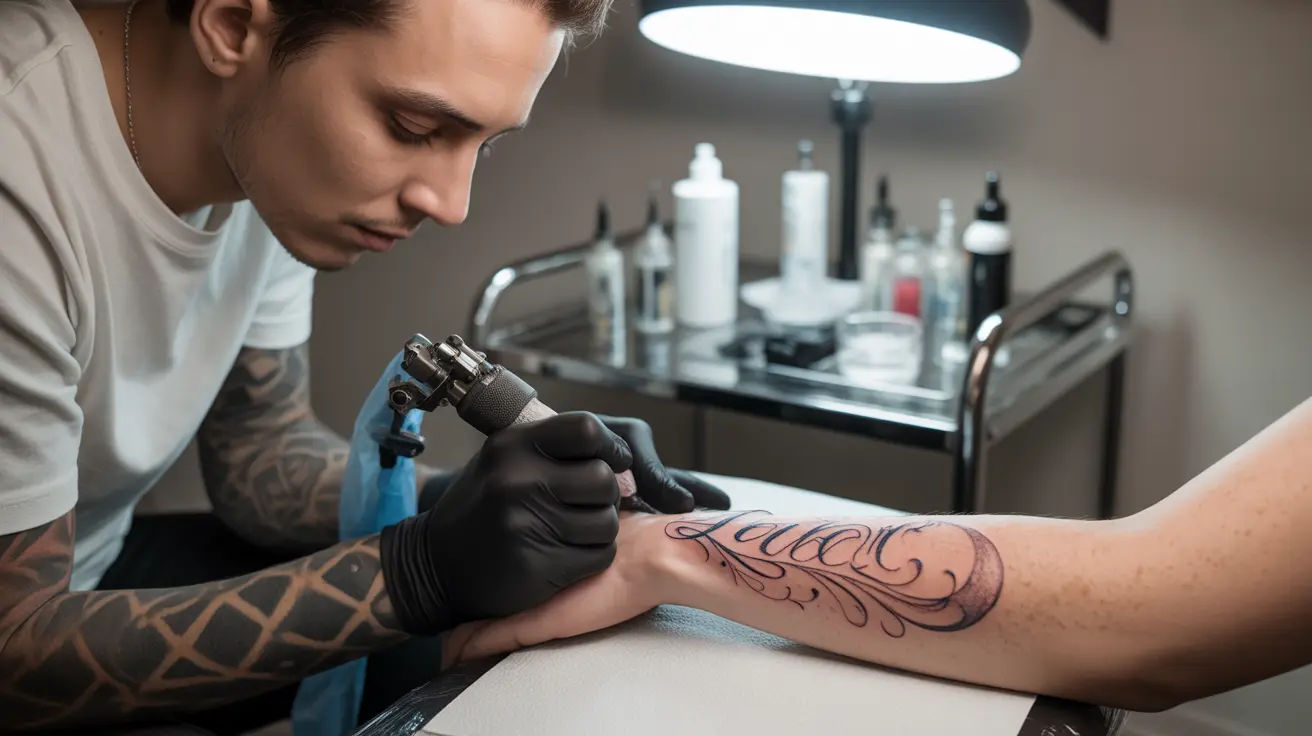Getting a wrist tattoo is a popular choice for self-expression, but many people wonder about the pain level involved. The wrist's unique anatomy and high concentration of nerve endings can make this location more sensitive than other body parts during the tattooing process.
Understanding what to expect and how to manage the pain can help you make an informed decision and prepare adequately for your wrist tattoo experience. Let's explore everything you need to know about wrist tattoo pain, including pain levels, management techniques, and healing expectations.
Understanding Wrist Tattoo Pain Levels
The wrist is generally considered a moderately to highly sensitive area for tattoos. This sensitivity is due to several anatomical factors:
- Thin skin layer over bones and tendons
- High concentration of nerve endings
- Minimal fat or muscle tissue for cushioning
- Presence of major blood vessels
Most people report that wrist tattoos cause sharp, intense sensations that can feel like a combination of burning and scratching. The pain level typically ranges from moderate to severe, depending on the exact placement and individual pain tolerance.
Inner vs. Outer Wrist Pain Differences
The location of your wrist tattoo significantly affects the pain level you'll experience:
Inner Wrist
The inner wrist tends to be more painful because it has:
- More sensitive nerve endings
- Thinner skin
- Visible veins and arteries
- Less protection from underlying tissues
Outer Wrist
The outer wrist usually causes less discomfort due to:
- Slightly thicker skin
- More bone structure for support
- Fewer exposed nerve endings
- Better cushioning from surrounding tissues
Factors Affecting Pain Intensity
Several factors can influence how much pain you'll experience during your wrist tattoo session:
- Size and complexity of the design
- Your personal pain tolerance
- Experience level of the tattoo artist
- Time of day (pain tolerance is typically higher in the morning)
- Physical and mental state
- Previous tattoo experience
Pain Management Strategies
To help minimize discomfort during your wrist tattoo session, consider these effective strategies:
Before the Session
- Get adequate sleep the night before
- Eat a nutritious meal
- Stay hydrated
- Avoid alcohol and blood-thinning medications
- Choose an experienced tattoo artist
During the Session
- Practice steady breathing techniques
- Use distraction methods
- Take breaks when needed
- Maintain open communication with your artist
- Stay as relaxed as possible
Healing and Aftercare
Proper aftercare is crucial for managing post-tattoo pain and ensuring optimal healing:
- Keep the area clean and moisturized
- Follow your artist's aftercare instructions carefully
- Avoid submerging the tattoo in water
- Protect the tattoo from direct sunlight
- Monitor for signs of infection
Most wrist tattoos take 2-3 weeks to heal completely, though individual healing times may vary.
Frequently Asked Questions
How much do wrist tattoos typically hurt compared to other tattoo locations?
Wrist tattoos typically rank as moderately to highly painful compared to other locations. They tend to be more painful than areas with more flesh, like the outer arm or thigh, but less painful than rib or spine tattoos.
Why are wrist tattoos more painful, especially on the inner wrist?
Inner wrist tattoos are particularly painful due to the abundance of nerve endings, thin skin, and proximity to blood vessels. The lack of fatty tissue or muscle in this area means there's less natural cushioning between the needle and sensitive structures beneath.
What factors can increase or decrease pain during a wrist tattoo session?
Pain levels can be affected by factors such as your physical condition, stress levels, sleep quality, and the artist's technique. Eating well, staying hydrated, and being well-rested can help reduce pain, while stress, fatigue, and alcohol consumption can increase it.
How can I manage or reduce pain while getting a wrist tattoo?
Pain can be managed through proper preparation, including getting enough rest, eating beforehand, and staying hydrated. During the session, focusing on breathing techniques, using distraction methods, and taking breaks when needed can help minimize discomfort.
How long does it take for a wrist tattoo to heal, and what aftercare helps with pain relief?
Wrist tattoos typically take 2-3 weeks to heal completely. For pain relief during healing, keep the area clean, apply appropriate aftercare products as recommended by your artist, and avoid activities that could irritate the tattoo. Cold compresses can help reduce swelling in the first 48 hours.




